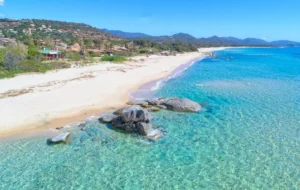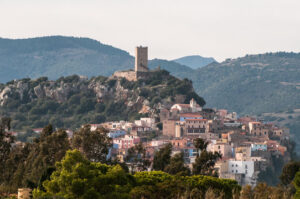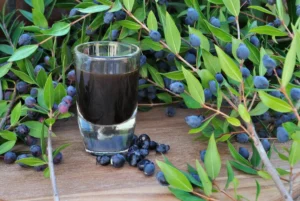Cagliari
Cagliari, the beautiful Sardinian capital, a city that faces the centre of the Gulf of the Angels, the southern part of the island, spreading out around the hill of the historic district of Castello, bordered to the north by the hills and plains, and to the south by the sea.
What it has in common with Rome, Lisbon and Istanbul is the fact that it was built on seven hills that identify as many city districts: Castle, Tuvumannu/Tuvixeddu, Monte Claro, Monte Urpino, Colle di Bonaria, Colle di San Michele, Calamosca / Devil’s Saddle. The city is in characterized by hilly areas where the city’s historic population lived and todays Cagliari Old Town still remains, there is also the low-lying areas , where most of the neighbourhoods sprung up since the nineteenth century. Cagliari is the political , economic and cultural centre of Sardinia , but it is also an important and popular tourist city : lively and vibrant during the day, with a steady stream of people meeting in cafes or just walking the ancient streets, continuing into the night as they visit the multitude of clubs, bars, restaurants and nightclubs. A city that also offers secular parties and festivals , full of museums and monuments, restaurants with traditional cuisine , craft shops and antique stores . The sea is crystal clear and transparent, its popular beach being Poetto with kilometres of white sand, lagoons and nature reserves unique in Europe. From Cagliari you can easily travel to the multitude of beaches and Villages where some of Sardinia’s most spectacular white beaches can be found, the likes of Chia, Costa Rei, Villasimus, Geremeas, Sant Elmo, and Torre Delle Stelle.
TOP 10 THINGS TO DO IN CAGLIARI
What to see in Cagliari in Sardinia? What are the places of interest to visit? What to see in particular? Here are the 10 things to see in and around Cagliari and each one is not to be missed!
Bastione di Saint Remy
Built to honor the first Piedmontese Viceroy, the Baron of Saint Remy, the Bastion is one of the most loved attractions of Cagliari. It is not only a monument of high historical value, but also one of the most beautiful points from which to admire the entire city.

Torri dell’Elefante e San Pancrazio
The twin towers of the Elephant and San Pancrazio tower over the area of the Old City of Cagliari. They were built by the Pisans in the first decade of 1300 to counter a potential attack by the Aragonese. Both made of white limestone by Bonaria, they are characterized by their impressive heights. The tower of San Pancrazio extends to the sky for 36 meters and protected the north side of the Castle; that of the Elephant which is 30 meters high, covered the south-western side.

Parco Molentargius – Saline
When you first set foot inside the very famous Molentargius – Saline Park, you could be forgiven for thinking that you were on some mysterious but fascinating island, a humid area of extremely high environmental importance that extends over 1,600 hectares (many of which are composed of basins of fresh water and others with different degrees of salinity).
A very delicate but efficient ecosystem, inside which there are many protected plant and animal species, among which you can find the famous pink flamingos. To fully enjoy the experience inside the Molentargius Park – Saline, rent a bike or take advantage of the skills of a tour guide.

Spiaggia del Poetto
Despite some renovations altering the composition of its white sand, the Poetto beach is still one of the most beautiful beaches on the coast of Cagliari. An unmissable destination in the summer months, the beach preserves its charm all year round.
Santuario di Nostra Signora di Bonaria
Built in Gothic-Catalan style at the behest of Alfonso di Aragona, the sanctuary dedicated to the Patrona Maximima di Sardegna is an attraction which has an interested history. On 25 March 1370, near the beach of Bonaria, a box was thrown into the sea by a Spanish sailing ship. After the friars of the Mercede managed to finally open it, they found inside a Statue of the Madonna with Child, holding a lit candle in his right hand. Starting from 1704, work was carried out to extend the Sanctuary; in 1926, the location obtained its consecration in Basilica Minore.
Palazzo Civico
The monumental Palazzo Civico of Cagliari, made of white limestone and overlooking the famous port of the Sardinian capital, is a triumph of different architectural styles, but well mixed together. Inside, the building houses the municipal offices, the Council Chamber and the representative rooms; on the outside, the Palazzo Civico is striking for its two tall octagonal towers.
Cattedrale di Santa Maria
Dating back to the thirteenth century, the construction of the sumptuous church is dedicated to the Assumption of the Virgin and Santa Cecilia Martyr and became a Cathedral in 1258. The Pisan Gothic religious building, which over time has undergone several expansion works, was remodeled following the canons of Baroque architecture. In the twentieth century, further work on the Cathedral uncovered two important chapels dating back to medieval times: the Pisan chapel and the Aragonese chapel of the SS. Sacrament dedicated to the Holy Thorn.
The interior of the Cathedral of Santa Maria is home to numerous artistic treasures, such as the wooden sculpture depicting the Madonna and Child of the Venetian school (dating back to the second half of the fourteenth century) and the four lions of the XII century, located at the foot of the presbytery steps. Inside the Cathedral there is also a crypt-sanctuary, built to celebrate and bury the Sardinian martyrs on the orders of Archbishop Desquivel.
Cittadella dei Musei
In the district of “Castello”, between the “Porta Cristina” and the Piazza Indipendenza, there is the ancient headquarters of the Regio Arsenale – now home to the most important artistic treasures of the city, gathered in the museum collections of the National Archaeological Museum and the National Art Gallery , which through the Nuraghic bronzes and Sardinian and Catalan retabli of the fifteenth century retrace the history of the island. The complex also houses the Collection of Anatomical Waxes and the Siamese Museum of Art.
Sella del Diavolo
The Sella del Diavolo (Sedd’e on Diaulu in the Sardinian language) is the promontory that rises in the southern area of Cagliari and separates the Poetto beach from that of Calamosca. Here you can discover a new way to observe the Sardinian capital and you will come across small archaeological masterpieces, such as the remains of a fort World War II and the Tower of Sant’Elia.
Castello di San Michele
You can’t leave Cagliari without spending some time in the park and, above all, in the nearby Castle of San Michele, an architectural masterpiece dating back to the Byzantine era (10th century). Inside the manor are hosted many exhibitions (some of which are paid). The complex has three towers and a moat surrounding the structure. The most important period of the Castle is undoubtedly between 1350 and 1511, when it was inhabited by the Carroz Family, a noble Spanish family.

When is the best time to visit Cagliari? Climate Information
Discover the best time to visit the city, the cheapest period and advice on events and activities for every season.
Climate, Average temperatures and Precipitation
The climate of Cagliari is Mediterranean, with mild and quite rainy winters, the averages are around 10 ° C, and hot and sunny summers with about 25 degrees. The springs are quite pleasant, with averages of 20 ° C, as well as the autumn which sees a bit of cold only in the month of November, since between September and October there are still highs of 25 ° C.
The rains are not abundant, because the perturbations pass quickly due to the mistral, fresh and dry wind blowing from France. The relatively rainiest months (about 8 days) are from November to February.
The sea is warm enough for bathing from July to September, having a temperature of around 24 – 25 degrees; while in June and October it is cold.
Undoubtedly Cagliari can be visited all year round, but the ideal periods are spring and autumn, when it is not too hot nor cold.
What to do in Cagliari in Spring
In spring, from March to May, the weather is pleasant during the day with averages of 20 ° C, while in the evening and early in the morning the minimum temperatures remain cool, around 10 ° C. The sea is cold, with a temperature of 16 ° C, so it’s better to wait for the summer season to swim.
This period is dry, with a few rainy days and about 35mm of rainfall.
I advise you to visit the city: a walk in the historic center, the numerous parks and religious sites, without forgetting a tour of the beautiful coastline.
Among the events not to be missed, the feast of St. Efisio, held in early May. An intense party time in which culture and centuries-old traditions come together in a suggestive procession, which is among the longest in Europe. Also in May Ethnikà is held, the festival-meeting between the people of the Sardinian cultural panorama. A multi-ethnic event for the integration and sharing of cultures.
What to do in Cagliari in Summer
Summer, from June to August, is dry and warm, with peaks of 31 ° C in August. When the “sirocco” blows in from the Sahara, the hottest days occur and, in these cases, the temperature can reach or exceed 40 ° C.
The sea is quite hot between July and August, with around 25 ° C: take a dip in the crystal-clear Sardinian sea and sunbathe on its beaches!
During the summer season, various events and games for children are held in the city, with a rich program. The events to be highlighted are in mid-July the Wine Festival, with many exhibitors and tastings of Sardinian wines and, in early August, the Beer Fest, with tasting of several excellent brands of local craft beers, together with games and fun things to do.
What to do in Cagliari in Autumn
Autumn, from September to November, is pleasant with a total average of 17-18 ° C. In September it can be said that it is still summer and, therefore, you can easily dive into the clear Sardinian waters, which have a temperature of 24 ° C. Even October is a mild month with a maximum of 23 ° C. Both months are dry and differ from November, in which there are about 8 days of rain and the averages (lower) attest to around 13 – 14 ° C.
Autumn is perfect for walking and for activities such as trekking, diving, windsurfing, etc.
Between the end of October and November the activity of note is with Invitas, a festival of Sardinian territories with traditions, customs, history and Sardinian food and wine. There are workshops and exhibitions, there is a food area with local specialties and many events take place.
From September to November, for a month, there is “10Nodi”, a festival with children’s theater performances and contemporary dance, experimental music, book presentations and more. The city will come alive, as well as theaters, cultural centers, galleries of the central districts and suburbs. Finally, in October there is the Sa Ruga, International Festival of Street Arts, where the Stampace district of Cagliari is transformed with colorful shows and sparkling performances by street artists and circus.
What to do in Cagliari in Winter
Winter, from November to March, is temperate and rainy, with averages of 10 ° C. It ‘s rare that it is very cold, but there may be days a bit’ fresh, with highs around 10 ° C and low at night close to zero, or a few degrees below- so pack your mittens. Snowfalls are very rare: one is remembered in 1985 and another one in 1993.
Take a trip to the many museums of Cagliari, such as the National Archaeological Museum, the Municipal Gallery of Modern Art or the Planetarium of L’Unione Sarda.
The city in December is full of events: from the traditional market to the Christmas fair, from craft shows and much more through the streets of the city.
At the end of the winter, the “Su Rei Ciancioffàli” is staged, with long masked parades and allegorical floats that bring lots of fun.
When is it cheapest to visit Cagliari?
The cheapest month to go to Cagliari is February, while July and August are the most expensive months. However, even at the beginning of spring (April and May) and autumn (September and October) you may find interesting offers and, certainly, prices will not be as high as in the summer, when Cagliari is stormed by tourists and the prices rise.



